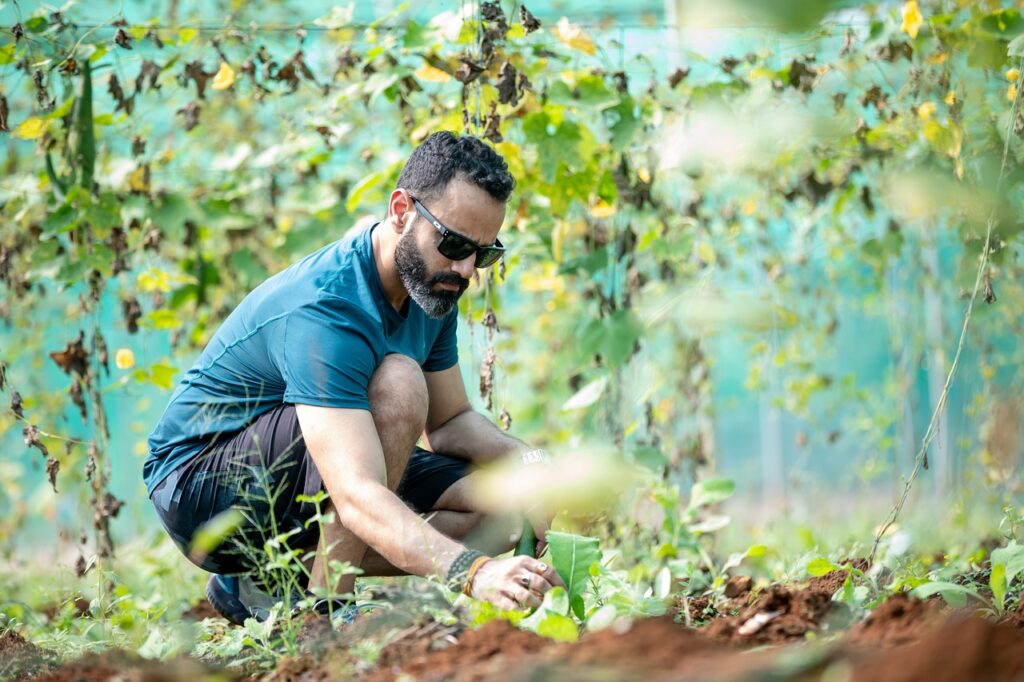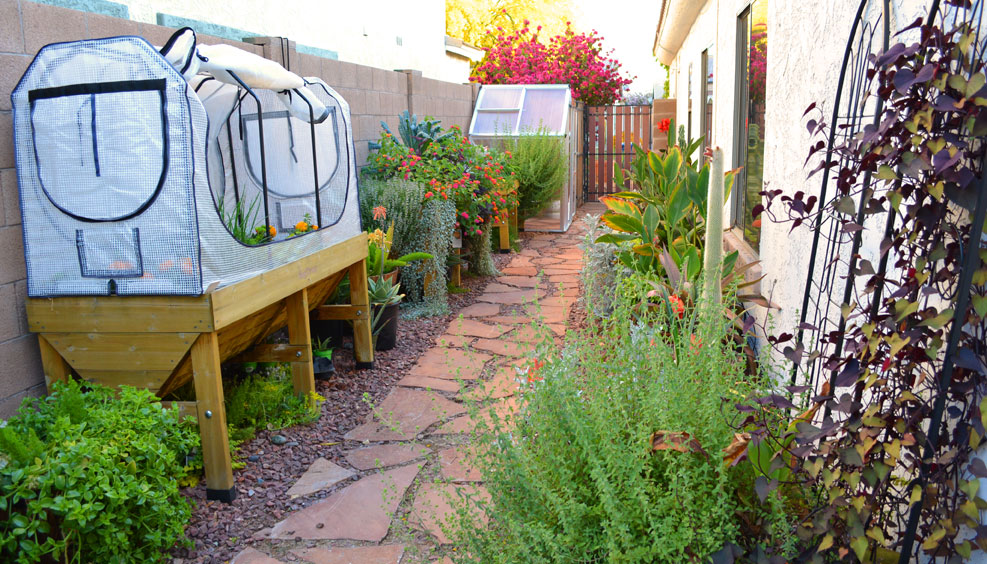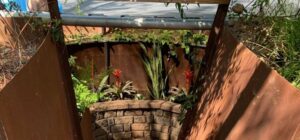What Are Microclimates in the Desert Southwest?

Wondering what are microclimates and how they can transform your gardening? Microclimates exist everywhere. They are especially useful in places like Arizona and the desert Southwest. This article will show you how to use microclimates to boost plant health and increase yields. Plus, we’ll help you get ready for Agriscaping’s upcoming October 12 workshop where you’ll learn hands-on techniques with the revolutionary Micro-climate H-Diagram plan. It’s the new standard for micro-climate identification recognized by Certified Agriscapers, Architects, and Designers worldwide.

What are Microclimates?
First, let’s answer the question: what are microclimates? In simple terms, microclimates are small areas with different environmental conditions compared to the surrounding area. A backyard garden can have multiple microclimates. These can be influenced by things like sunlight, wind, soil, or even nearby structures like walls or fences. The changes may be subtle, but they can have a big impact on how your plants grow.
Why Microclimates Matter in Home Gardening
Now that you know what microclimates are, why should you care? In places like Arizona or the desert Southwest, where temperatures can be extreme, identifying and using microclimates is crucial. Microclimates can help you create more favorable growing conditions. You might notice one side of your yard is hotter and drier while another side is cooler and shaded. Understanding these differences helps you match the right plants to the right spots.

Examples of Microclimates
Common microclimates in a garden include sunny, shady, windy, and sheltered spots. In the desert, you’ll often find that:
- Areas near walls hold heat longer, creating warmer zones.
- Shaded spots under trees or overhangs are cooler and retain moisture.
- Raised beds warm up faster in the spring but dry out quickly.
- Low-lying areas can collect cool air and moisture, making them perfect for water-loving plants.
Using Microclimates to Optimize Plant Growth
Once you know what microclimates are, you can use them to your advantage. Understanding the microclimates in your yard allows you to optimize your garden for plant growth and yields. For example, if you have a spot that stays warm longer, plant heat-loving vegetables like potatoes, tomatoes, or peppers. If an area is cooler, use it to grow leafy greens or herbs that prefer lower temperatures.
Identifying Microclimates in Your Garden
Before you can use microclimates effectively, you need to identify them. Here’s how you can begin to find different microclimates in your garden. Want to maximize your garden’s potential? Start with a microclimate assessment by an Agriscaping Home Consultation expert.
1. Observe the Sun
Start by watching how the sun moves across your yard. Take notes on which areas get the most sunlight and at what times of day. In Arizona, the sun is intense, so plants that need full sun will thrive in areas with six or more hours of direct sunlight. Plants that prefer part shade will do better in areas that get less direct exposure.
2. Check for Shade
Look for natural or man-made structures that provide shade. Trees, buildings, fences, and pergolas can all create cooler spots. These areas are perfect for plants that don’t like too much heat. You might also find that shaded spots hold moisture longer, which can reduce your watering needs.
3. Measure Wind Exposure
Wind can be a major factor in microclimates, especially in the desert. Some parts of your garden might be more exposed to wind, which can dry out plants quickly. Other areas might be sheltered by walls or shrubs. Wind-prone spots may need hardy, drought-tolerant plants, while sheltered areas could support more delicate varieties.

4. Analyze Soil
Soil can vary across your garden, affecting how water drains and how nutrients are absorbed. Some areas may have sandy, well-draining soil, while others might be more compacted or rocky. Testing your soil will give you a clearer picture of how to match plants to the conditions of each microclimate.
5. Take Note of Temperature Changes
Even small changes in temperature can affect plant growth. For example, areas near concrete, rocks, or walls tend to retain heat, creating warmer microclimates. These are great for plants that thrive in heat. On the other hand, lower-lying spots or shaded areas tend to stay cooler, which can be useful for extending the growing season of cooler-weather crops.

Matching Plants to Your Microclimates
After identifying the microclimates in your garden, the next step is to choose the right plants for each one. This ensures that your plants thrive in their environment rather than struggling. Here’s a quick guide:
1. Hot and Sunny Microclimates
In the desert Southwest, many areas of your garden will be hot and sunny. These spots are perfect for heat-tolerant plants like cacti and succulents, or desert-adapted trees like mesquite and palo verde. You can also grow vegetables like tomatoes, potatoes, peppers, and squash.
2. Cool and Shady Microclimates
Shady areas are great for growing leafy greens like spinach, lettuce, and kale. You can also plant shade-loving flowers like ferns, hostas, and impatiens. These plants will appreciate the cooler temperatures and protection from the harsh desert sun.
3. Windy Microclimates
If you have a wind-exposed area, choose hardy plants that can withstand drying winds. Consider using native grasses, agave, or yucca. These plants are well adapted to the desert climate and won’t be damaged by strong winds.
4. Moisture-Rich Microclimates
Shaded, low-lying spots or areas with heavy soil can retain more moisture. Here, you can plant water-loving species like roses, hibiscus, or certain fruit trees like figs or pomegranates. Just be sure to monitor water levels to avoid overwatering.

How to Alter Microclimates
If you’ve discovered microclimates that aren’t ideal for the plants you want, don’t worry. You can make adjustments to create the conditions your plants need. Here are a few ways to modify microclimates:
1. Add Shade
Use shade cloth, pergolas, or trees to create cooler areas in your garden. This can help protect sensitive plants from intense heat.
2. Build Windbreaks
Windbreaks can help shelter plants from drying winds. You can create a windbreak using shrubs, walls, or fences.
3. Improve Soil Drainage
If you have areas with poor drainage, consider raising your planting beds or adding organic matter to improve the soil.
What Are Microclimates? A Great Tool to Help You Garden!
By now, you’ve got a good understanding of what microclimates are and how to use them in your home garden to your advantage. With a little observation and some strategic planting, you can turn your garden into a more productive, thriving space. Ready to learn more? Join us for our October 12 workshop and see firsthand how to maximize your garden’s potential using microclimates!

Read Our Latest Posts…
- Start the New Year with a Thriving Edible Landscape
 Expert tips for desert gardening, from plant zoning and efficient irrigation to soil care and agriscaping for a sustainable landscape.
Expert tips for desert gardening, from plant zoning and efficient irrigation to soil care and agriscaping for a sustainable landscape. - Understanding Freeze Pruning
 Expert tips for desert gardening, from plant zoning and efficient irrigation to soil care and agriscaping for a sustainable landscape.
Expert tips for desert gardening, from plant zoning and efficient irrigation to soil care and agriscaping for a sustainable landscape. - A Garden-Fresh Christmas: Agriscaping Tips for a Festive and Sustainable Holiday
 Expert tips for desert gardening, from plant zoning and efficient irrigation to soil care and agriscaping for a sustainable landscape.
Expert tips for desert gardening, from plant zoning and efficient irrigation to soil care and agriscaping for a sustainable landscape. - 7 Garden Design Themes for Your Elegant Edible Landscape
 Expert tips for desert gardening, from plant zoning and efficient irrigation to soil care and agriscaping for a sustainable landscape.
Expert tips for desert gardening, from plant zoning and efficient irrigation to soil care and agriscaping for a sustainable landscape. - Subterranean Trampoline Gardens: A Hidden Oasis for Growing and Playing
 Expert tips for desert gardening, from plant zoning and efficient irrigation to soil care and agriscaping for a sustainable landscape.
Expert tips for desert gardening, from plant zoning and efficient irrigation to soil care and agriscaping for a sustainable landscape.
